I praise Dr. Michael Glick’s remarks in the May 2011 Editorial: Justifying changes in the clinical practice (JADA 2011; 142[5]: 478-479). In my capacity as a dental student, education is progressively becoming less traditional. Education is a faculty responsibility, but today, and more than ever, education and learning are largely a student responsibility. Dental education curriculum and training ought to support the development of analytical skills, the ability to critique research and translate research into clinical application and implications. These are valuable skills. And as Dr. Glick alluded to, these skills if learned can dictate successful changes in our practice and for our patients.
The students at the Indiana University School of Dentistry are advocating for the first student outreach clinic. We have proposed clinical policies, procedures and protocols based on evidence-based research. Moreover, we expect to implement evidence-based methodologies in caries detection, treatment and monitoring of caries disease progression. I applaud the ADA Center for Evidenced Based Dentistry (http://ebd.ada.org). The ADA EBD provided a gamut of online tools and resources available to us to aid in evidence-based treatment and disease management. Research is underutilized and lost as quickly as it is emerging. So, I urge my colleagues to evaluate their dental education and methods of practices. Understand the research and evidence behind our practices. Evidence-based practice is a testament to the accountability and commitment to our patients and the dental community.
Access the article online from the Journal of the American Dental Association: http://jada.ada.org/content/142/5/478.full.pdf+html
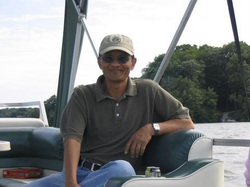 I step onto the wet green grass. I walk across a small hill in my black canvas shoes, and as I tip toe, I feel my toes wedge through the freshly cut wet grass blades. The water soaks my shoes, and my feet slowly become wet.
For a moment, I just stand there beginning to think. Today is May 1st, 2011. I close my eyes and let my tears drip down off my cheeks. They are happy tears. I let my mind wander back in time and there I reunite with memories of my father. Five years ago from today, I was driving to Hospice to see my dad. Before I got there, I answered a call from my sister. Between sobs she finally said, “They called Mom. He passed away.” I cried, “Ok,” and hung up the phone. I never made it one last time to say “Goodbye.” Sometimes I think it’s because “goodbye” is not forever; it’s not the end. Sometimes I think he parted that way to tell me we will only meet again.
In his life, my father always reminded me this: “Help yourself, and God will help you.” Since his death, I understood never to lose heart of anything. 2 Corinthians 4:16 says “That is why we never give up. Though our bodies are dying, our spirits are being renewed every day.” And so though our flesh goes, our spirit, the core element of our existence, is renewed and replenished by the Lord who gives us unlimited strength. You may or may not believe in a higher power, and that is okay. I wouldn’t be here and nor the person I am today without my father, who taught me to help myself, and my faith in the Lord, who strengthens my spirit to know that all things are possible.
I stand there gazing across the cemetery. I listen to the wind brush through the leaves. I stop and draw in a deep breath of air. The air smells of rain, of life and your spirit, and it touches my heart. You’re still here, Dad. I remember you every day.
"Help yourself, and God will help you."
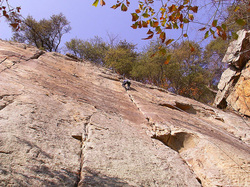 © 2010 BetheCatalyst I recently contributed a piece to a newsletter that reflects my life as a dental student. I wanted to share with you the things my classmates and I are doing and changing in our community.
To all, I hope this finds you well.
I am an avid rock climber. In rock climbing, my teacher taught me this: it’s not about the destination; it’s about the journey and how you get there, the ups and downs. The same can be said about my journey in dental school. I am a third year dental student. Part of my job every day is to remind myself to apply the way I climb to the way I lead my life. I want to share with you the opportunities I have seized as a dental student and what my journey through dental school translates to me.
As a daughter of Khmer expats, I have witnessed my mother’s poor oral health from lack of dental care under the Khmer Rouge, a regime led by the infamous dictator Pol Pot. Dentistry was obliterated between 1975 and 1979, and the dental school recommenced in 1985 with only 13 trained dentists. Applying and matriculating into dental school became a reality after following a childhood dream of wanting to provide a health smile to my mother and healthy smiles to communities with lack of access and availability to dental care.
So, public health and dentistry have grown to become my niche. My peers will tell this to you, too. Classmate Ali Sajadi and I advocated for the IU School of Dentistry to become the 6th dental school in the nation to conceive a student chapter of the Association of American Public Health Dentistry (AAPHD). Since our official recognition in October 2009 as a student chapter, the AAPHD-IUSD Student Chapter has accomplished many great things in community dentistry and public health. The AAPHD-IUSD Student Chapter and dental students have contributed their time and granted their support and effort in worthy causes such as providing free dental screenings and giving information on low-cost clinics to the homeless at the Overflow Event. Students are making a difference and trying to provide care for the most number of people for the least amount of money.
AAPHD-IUSD members have started an initiative to determine the need for domestic violence resource cards in the comprehensive care clinics. Currently there are cardholders installed in every restroom throughout the school. Student members have been refilling the holders and monitoring the number of cards that are being taken. This data will help the school to decide if having the cards available in the comprehensive care clinics as well as the restrooms would be effective in helping students connect possible victims of domestic violence to appropriate resources.
Dental hygiene students and AAPHD-IUSD members partnered with Oral Health Solutions and the Hollis Adams Foundation in Indianapolis to promote oral health education and oral hygiene among adults with special needs at the Hollis Adams Adult Daily Living Program. This was a unique experience that granted students and me the opportunity to interact and communicate with adults with special needs.
Finally, our current project involves partnering with People’s Health Center on 10th Street and the Academy of American Pediatric Dentistry-IUSD Student Chapter to advocate for the first IUSD student outreach clinic. This student driven vision of a student run clinic has long been supported by the student body, and this would facilitate the opportunity for clinical application and understanding of concepts and ideas. Being a part of creating these opportunities in dental school for other students and for me is in a sense a selfish act sometimes because I believe that being a dental student means being an investigator in the community and a lifelong learner. To me, being a student means that learning is a faculty responsibility, but more importantly, learning is a student responsibility. This journey has taught me to ask questions in my own community, evaluate existing structures and programs, be the change and identify strategies, and cultivate lifelong! relationships in the community.
Learning never has an end. My future plan this year includes traveling to Cambodia in December as a dental student to volunteer at a dental clinic for orphans in Cambodia. While I am there I hope to partner with the University and encourage and support the manpower in Cambodia to evaluate oral health preventative programs in rural communities, where roughly 80 percent of the population is concentrated in rural communities along the Mekong River. We hope to examine risk factors, who is providing preventative care, how is it being provided and how dental nurse therapists are standardized in these communities.
My journey as a dental student has been very humbling. I am thankful every day for the unasked for tests, challenges, and opportunities. It is exciting to experience where this journey will carry me! Remember, whether you are a rock climber, a dancer, a student, or dreamer, it’s not about the destination. It’s about the journey.
Between the years of 1974-1979 Cambodia remained under the rule of the Khmer Rouge Regime, a social group that aimed to reduce the country to an agricultural society, led by notorious dictator Pol Pot. The regime was responsible for over nearly 2 million lives in what later became known as the Cambodian Genocide. During this time, education was abolished, currency, public transportation, and postal service system. With the annihilation of nearly all institutions, medicine and dentistry were abolished.
Following the tragedy, it was reported that only two out of the six qualified dentists were able to provide dental care. The dental school in Cambodia recommenced in 1985, and it began its journey on the road to recovery. In 1990, it was reported there were 34 qualified and trained dentists (Durward 1991). There are a large number of traditional dentists, trained by apprenticeship, that are not recognized by the school. It has been reported that there may be over 300 traditional dentists by apprenticeship practicing still today and providing care to a large number of dental care to the population (Durward 1991).
The country conducted its first ever and most recent National Oral Health Survey in 1991. In 1991, the National Oral Health Survey reported a high mean decay, missing, total (DMT) score of 3.2 in the Phnom Penh, the capital city of Cambodia. The survey also revealed that about 6.4% of six year old children were caries free, and the World Health Organization showed 50% were caries free (and this may be true in provincial areas).
Following this survey, the Cambodian National Plan for Oral Health Plan 1992-2000 aimed to address four areas: (1) Oral health (2) Oral health promotion and prevention (3) Care delivery system and (4) Manpower training. Moreover, the design and implementation of health preventive and promotion programs were born as an outcome of the survey results.
Tooth brushing and nutrition programs were implemented into primary school curriculum and a fluoride rinse program was implemented. In 1991 the Oral Health Preventive School Program sought to address needs and objectives in these four areas in primary schools (Teng 2004). Today, about 95 primary schools throughout Phnom Penh participate in the Oral Health Preventive School Program (OHPSP). OHPSP has four components: (1) Daily tooth brushing (2) Weekly fluoride mouth rinsing (3) Oral health education and (4) Oral health competition. One study revealed that with good cooperation, informed knowledge, attitudes and practice about oral health and hygiene correlated with a reduction in caries prevalence among children in primary schools (Teng 2004).
In addition, the National Plan for Oral Health recommended the training of the dental nurse to provide dental services to rural communities. It is estimated that 80% of the population live in rural areas where access and availability to dental care are barriers. In an article titled “Dental nurse training in Cambodia—a new approach” it was reported there were 12 trained dental nurses, and it was projected there be 130 trained dental nurses by mid-1997. This would bring the dental-nurse to population ratio to 1:60,000 (Mallow 1991). The World Dental Federation reports that low income countries like Cambodia see a dentist to population ratio of 1:119,000. This is alarming. The disparities in access and utilization to oral health in rural communities has become a country's call for help. It has become an issue or need that I hope to learn more about and find out how I can help be the change.
References
1. Barmes, D.E. (1971) Khmer Republic-Report on Dental Health. Geneva: World Health Organization.
2. Durward, C.S., Hobdell, M. (1991) Cambodian National Oral Health Survey 1991. In: Durward CS, Todd RV, So PK, ed. Cambodian National Oral Health Survey 1990-1991. Phnom Penh, Cambodia.
3. Durward, C.S. and Todd, R.V. (1991): Rebuilding the ruins: dental service and manpower in Cambodia. International Dental Journal. 41, 305-308.
4. Durward, C.S. & Todd R.V. (1993) The Cambodian National Oral Health Plan 1992-2000. International Dental Journal. 43:219-222.
5. FDI World Dental Federation. Facts and figures. Available at: “wwww.fdiworlddental.org/resources/3_0facts.html.” Accessed 9 Feb 2011.
6. Mallow, PK (1997) Dental nurse training in Cambodia--a new approach. International Dental Journal. 47(3), 148-56.
7. Pack, A. (1998) Dental services and needs in developing countries. International Dental Journal. 48(1), 239-247.
8. Shidara, E., McGlothlin, J.D., Kobayashi, S. (227) A vicious cycle in the oral health status of schoolchildren in primary school in rural Cambodia. Int J Dent Hygiene. 5:165-173.
9. Teng, O. et al. (2004) Oral health status among 12-year old children in primary schools participating in an oral health preventive school program in Phnom Penh City, Cambodia, 2002. Southeast Asian Journal Trop Med Public Health. 35(2) 458-462.
This Valentine's Day my boyfriend got me a stack of books about Cambodia to read before my trip. These are bestseller books!
This is a 1984 British film that I watched in high school. It tells the compelling story of a photographer's account under the Khmer Rouge regime. He bears witness to the mass human cleansing or genocide under Pol Pot, one of history's most infamous dictator, who claimed nearly 2 million lives in Cambodia.
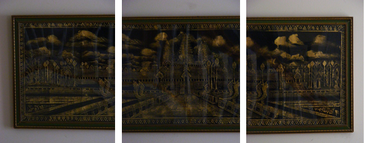 History gives us record and events of the past. In a poetic prose, it is the myth we make; history is story telling. What this does is offer us a perspective on our life, the story of Us in this world. So, it becomes important to me to hear this story so that we may not remake history.
I want to write today about Cambodian history because quite frankly, to me, these stories were captured and released only by survivors and very few historians. Everything I learned about Cambodian history came from my father and mother and personal interest from published reading materials.
My father once told me legend has it that Cambodia was born through the union of a Chinese princess and Indian foreigner. My parents agreed little is known about prehistoric Cambodia. They told me Cambodia stretched over a huge area in the beginning, but slowly over time it was reduced to a small country by neighboring countries claiming occupation and territory into Cambodia.
There were a number of kingdoms that ruled early Cambodia. One of the earliest and largest kingdoms was known as the Funan kingdom by the Chinese. Funan was a major seaport, and it played a central role in the introduction of Indian culture into Cambodia. The Funan kingdom worshiped Hindu and Buddhist deities. Early Cambodia was governed by autocratic kings who practiced hierarchical caste concepts that were adopted from India.
The Angkor Empire was considered to be one of the greatest rise and fall of an empire in mainland Southeast Asia. The rise of the Angkor Empire was attributed to water and the development of a complex hydraulic system. In 1066 the king ordered for the construction of the Angkor Wat Temple. It is believed that this temple was built for the Hindu god Vishnu. This majestic temple would serve as the temple and a mausoleum. Furthermore, Angkor Wat would resemble a spatial universe and be a symbol for man to reach and be closer to the house of the gods. But like other great empires, the curtains were about to close the stage; the show was about to end. Many suggest that the decline of the Angkor Empire was the outcome of overworked irrigation systems, deforestation, and massive construction that lead to a strain on the empire and its people. Following the fall of the Angkor Empire, Cambodia was ruled by a series of kings, and over time, Thailand and Vietnam ruled this region too.
In 1863, France began its 90 year rule by forcing Cambodia to sign a treaty of protection or protectorate to protect Cambodia from being erased from the map. The French maintained its interest by controlling internal affairs. The French did little to encourage education, and by the end of World War II, after 70 years of colonial rule, there were no universities and only one high school in the country. After years of war and rebellion, Cambodia declared its independence in 1953. However, even following its independence Cambodia endured political turmoil.
North Vietnam communist forces invaded Cambodia in attempts to gain more control over the land. Throughout this period, a coup called the Khmer Rouge worked alongside Vietnam to gain control over Cambodia. In 1975, the Khmer Rouge had launched its final and successful attack on Cambodia and overthrew Prime Minister Lon Nol and the government. This ended the civil war in Cambodia.
On April 17, 1975, the Khmer Rouge regime, led by the infamous dictator Pol Pot, paraded into the Phnom Phen celebrating victory. Within hours, these ringing sounds of joy would be suppressed by sounds of cries, horror, and gunshots in the streets. The Khmer Rouge would begin its plan to restructure Cambodia into a utopian communist society. This was the beginning of a mass genocide and human cleansing. Almost 20 percent of the country's population lost their lives under Pol Pot. The Killing Fields were a number of sites in Cambodia where a number of people were killed and buried by the regime. The Khmer Rouge abolished currency, postal services, and education. My mother recalled these events. The elderly, sick, and rich were forced out of their homes carrying only what they could and forced into concentration camps. My mother was a survivor of the Cambodian Genocide, but many people died of famine and disease. In order to survive under the rule of the Khmer Rouge, her family lied on multiple accounts to avoid execution because her father had worked for the former government. The burned family photos and documents that would lead the Khmer Rouge to uncover her father’s former association with the old government.
Finally, on January 7, 1979, Vietnam liberated Cambodia from the Khmer Rouge. Thirty years later, Cambodia is still on the road to recovery. Today, Cambodia is considered one of the poorest countries in Asia, but people tell me there is a small gleam of hope and burning optimism wherever you go. That makes me smile, and it gives me the strength to know we can still make a difference. We can write a different story.
The time is now. I am refreshing and learning my Khmer. Khmer is the official language of Cambodia. There are 76 letters in the Khmer alphabet. Mastering the language is very challenging because it is predominantly a tonal or phonetic spoken language. I understand most of the words, but speaking the language is difficult for me. Over the next several months I will join voice chats online and spend a lot of time with Mom to practice and practice and practice speaking Khmer.
Coming soon, I will share my study abroad proposal that I am currently working on with my faculty advisors since I will be traveling alone, and I will write more about my preparation to Cambodia.
Chumreaplea!
Stephanie
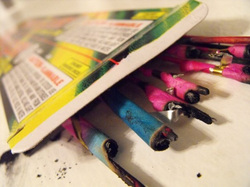 © 2010 BetheCatalyst This is my first entry in 2011. Before moving further, I want to share with you why my international travel and experiences have become central elements to the art of my personal growth and development. There are 2 reasons. First, traveling gives me the unique opportunity to open my heart and accept unasked for challenges and tests. Second, traveling has uncovered my inspirations and has empowered me to influence the world.
I am a hungry scholar. Curiosity is simply human nature. We are curious to learn about the world around us. And perhaps I am selfish to crave to learn about myself and identify my purpose in life. Traveling can push us to test our limits. For example, I traveled to Jamaica in December 2008 to speak to a small community about the importance of oral health and oral hygiene. I had mixed emotions growing inside. Would I be heard? Will my work make a small difference? Will they accept our gifts? I felt naïve, and I felt vulnerable. This humbling experience encouraged me to step beyond my comfort zone and take risks. These persistent forces and emotions of fear, excitement, and serenity led to a dynamic change in my character. We are unescapably morphed under stressful situations. Stressful environments allow us to hone in on our character and confirm our identity. As I stepped outside from the church that evening, I smiled innocently from ear to ear. No longer overcome by my fears, I realized a burning desire to continue to learn, challenge myself and reach out to others.
Unearthing our most prized processions, our gifts, talents and internal motivations, can empower us to accomplish beautiful things. I think if you listen closely with your heart, then your heart will rightfully serve you as your guiding light to discovering this. But sometimes listening to our heart is the most difficult task to perform. We are constantly distracted and blinded by external forces and society’s expectations. We choose not to oppose or resist these barriers, and we inadequately divert our attention and energy to the underlying internal forces that would otherwise morph us into the being we were made to be. Interacting with the Aborigines of Australia and sharing my knowledge and experiences with the community in Jamaica, I have realized that my love and joy for learning and serving others have become the underlying forces to discovering myself and empowering me to be the small change in this world.
So, by recognizing the importance of traveling and studying abroad, I believe we can each be the catalyst and be witness to transformation in this world. Biochemical pathways would take years to complete if unaided by a catalyst. A catalyst speeds up the rate of a reaction by lowering the amount of energy required to reach the end product. I make the analogy of the individual to a catalyst because if we pool our knowledge, resources, and energy, then I believe we can witness the beauty of our dreams. Be the catalyst. Amplify the mechanism of empowerment.
Cheers, to this happy New Year 2011! Transformation has begun.
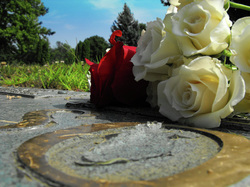 © 2010 BetheCatalyst This is what I miss about you.
I am sitting here. I am meeting with my mind, body, heart and soul to fulfill a childhood dream and Father’s word of honor.
To the world, my family and friends, I am sharing this journey as it begins here because this is precisely how my father and I would have embarked on it together. We would have shared our story to the world and to as many people as our story would tell it to. My father was more than a great man. He passed away four years ago from an aggressive and unpredictable cancer. In the life I have been blessed to be with him, we made our word to go to Cambodia before my graduation. It is an honor to be delivering this dream. In his spirit and memory, I will welcome a home I never knew, and I will venture out to serve as many abandoned handicapped and vulnerable HIV positive orphans with Dr. Robert Ogle and the Cambodia World Family Organization. I invite any one to help me prepare for this journey. Join us in 2011!
Dad, this is our father-daughter dance. I hope you dance.
|


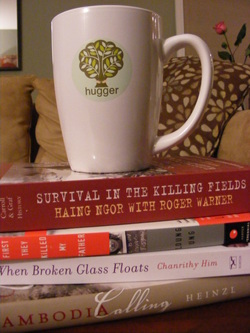



 RSS Feed
RSS Feed